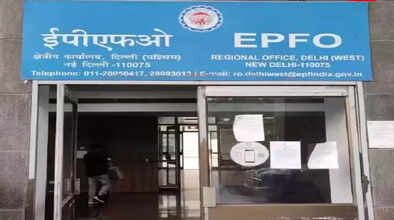EPFO New Rules 2025: When can you start withdrawing money from ATM? From equity investments to apps, know about 5 PF related changes

EPFO is going through a significant digital transformation. Once considered a traditional department lagging behind in digitization, this department is now adopting modernization. From 2025, you will also be able to withdraw your PF directly from the ATM. The Employees' Provident Fund Organization (EPFO) is going to make important changes in the new year. If you are a member of EPFO and regularly contribute to your PF account, then this news will be very relevant to you. Here we will highlight 5 major changes to be implemented by EPFO in 2025 and the benefits they provide.
The number of members of the Employees' Provident Fund Organization (EPFO) is constantly increasing. EPFO keeps changing the rules from time to time so that the members do not face any kind of trouble. Some important changes are also to be made by EPFO in 2025. If you are also a member of EPFO and deposit money in PF account every month, then this news can prove to be very useful for you. Here we are going to tell you about 5 major changes to be made by EPFO in 2025.
Will be able to withdraw money from ATM
This is one of the biggest changes to be made under EPFO 3.0. According to various reports, from June you will be able to withdraw money from ATM. Reports also suggest that withdrawal will be limited to 50% of the total PF balance. EPFO allows linking of bank accounts with PF accounts, but member employees will have the facility to withdraw money from their PF account. However, it is not clear whether they will use this linkage for ATM withdrawal or a new mechanism will be introduced for ATM withdrawal. In the event of death of the account holder, their beneficiaries will be eligible to use ATM for withdrawal. To facilitate this, beneficiaries must link their bank account to the EPFO account of the deceased.
The Employee Deposit Linked Insurance (EDLI) scheme provides insurance benefits of a maximum of Rs 7 lakh to the legal heirs of deceased EPFO members. Reports also suggest that beneficiaries will be able to withdraw insurance claims through ATMs. According to an ANI report, Labour Secretary Sumita Dawra mentioned that a major increase is expected by January 2025.
Can increase contribution
Under the Employees' Provident Fund and Miscellaneous Provisions Act, 1952, both the employee and the employer contribute 12-12% of the basic pay, dearness allowance and retaining allowance, if any, to the EPF account. The entire contribution of the employee is deposited in the EPF account. Under EPFO 3.0, 8.33% of the employer's contribution goes to the EPS (Employees' Pension Scheme) and the remaining 3.33% goes to the PF account. Another big change this year is that if you want, you can deposit additional money in your pension account, which will increase your pension amount after retirement.
Formula- How to calculate EPS pension
Number of years of pensionable service X average monthly salary for 60 months)/70.
A special mobile app with all the details
Like mobile banking, a special app is going to be introduced for EPF accounts. Through this, all the members will be able to track the details of monthly contributions, pension funds, contributions from previous jobs etc. in their account.
Union Labor Minister Mansukh Mandaviya has announced that his ministry will soon launch a new IT system. This new system will solve the problem of transferring member ID while changing jobs, which will end the hassle for the employees. It will also simplify the process of claiming money from the PF account. Also, the advanced IT system will help employees avoid fraud.
Will be able to invest in equity in future
EPFO is also considering equity options for its members. This will help employees to manage their funds better. This idea can help members to get more returns in their PF account.
Withdraw your pension anywhere from any bank
Pensioners will be able to withdraw their pension from any bank in the country. This is expected to provide relief mainly to those elderly people who return to their villages after retirement.

